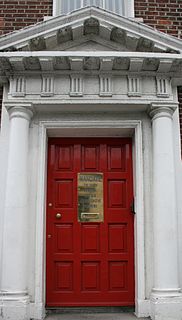Related Research Articles
In British politics, an affiliated trade union is one that is linked to the Labour Party. The party was created by the trade unions and socialist societies in 1900 as the Labour Representation Committee and the unions have retained close institutional links with it.

The Union of Shop, Distributive and Allied Workers (USDAW) is a trade union in the United Kingdom, consisting of around 450,000 members nationwide. USDAW members work in a variety of occupations and industries including: shopworkers, factory and warehouse workers, drivers, call centres, clerical workers, milkround and dairy process, butchers and meat packers, catering, laundries, chemical processing, home shopping and pharmaceutical. The retail sector employs around 2.77 million people.

Mandate is a trade union representing retail, administrative and distributive workers in Ireland.

The National Association of Co-operative Officials (NACO) was a trade union for staff in the co-operative sector in the United Kingdom, principally the Co-operative Group and other retail societies, Co-operatives UK and the Co-operative Party.
The National Amalgamated Coal Workers' Union was a trade union in the United Kingdom which existed between 1889 and 1922. It represented coal porters and carmen.
The National Union of Co-operative Insurance Society Employees (NUCISE) was a trade union in the United Kingdom.
The Chemical Workers' Union was a trade union in the United Kingdom.
The National Amalgamated Union of Labour (NAUL) was a general union in the United Kingdom.

The National Union of Distributive and Allied Workers (NUDAW) was a trade union in the United Kingdom.
The United Patternmakers Association (UPA) was a trade union in the United Kingdom.
The National Union of Gold, Silver and Allied Trades (NUGSAT) was a trade union in Britain and Ireland. It represented workers in precious metals, jewellers, diamond polishers, electroplaters, watch and clock repairers and dental technicians.

The Amalgamated Textile Workers' Union (ATWU) was a trade union in Great Britain.
The Irish Bakers' National Amalgamated Union was a trade union in Ireland.
The Amalgamated Textile Warehousemen's Association was a trade union representing workers in the textile industry in the United Kingdom, principally in Lancashire.

The Amalgamated Society of Dyers, Finishers and Kindred Trades was a trade union representing dyers and workers in related jobs in the United Kingdom.
The Amalgamated Union of Co-operative Employees (AUCE) was a trade union representing retail and related staff of co-operative businesses in the United Kingdom.
The National Union of Printing and Paper Workers was a trade union representing workers in the printing industry in the United Kingdom.
The Irish National Union of Vintners', Grocers' and Allied Trades Assistants (INUVGATA), also known as the Barmen's Union, was a trade union representing retail and bar staff, principally in Ireland.
George Maurice Hann was a British trade unionist.
Joseph David Hiscock was a British trade union official.